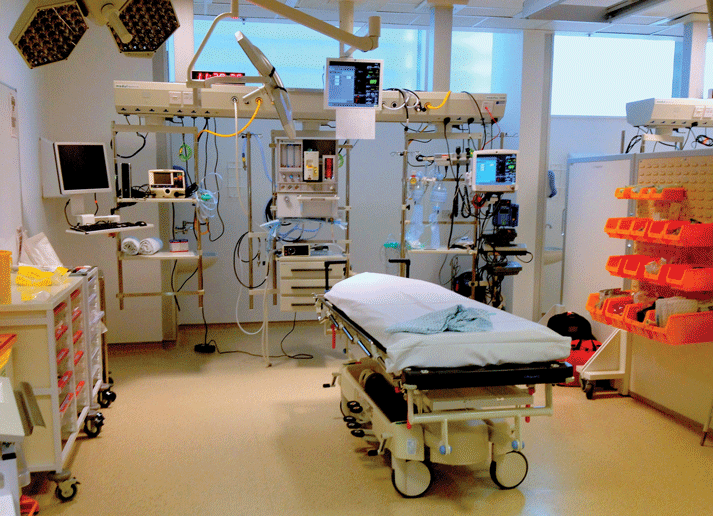Leveling the Virtual Playing Field: Virtual Backgrounds in Residency Interviews as a Tool to Reduce Implicit Bias
Lucas Nelson, MSIV - Oakland University William Beaumont School of Medicine, Rochester, MI
As a response to the COVID-19 pandemic, in May 2020 The Coalition for Physician Accountability recommended that residency programs interview candidates virtually.1 This recommendation is currently being applied to the 2021-2022 interview cycle as individual specialties recommend the continuation of virtual interviews. With these updates, many students will be preparing to rearrange or otherwise alter their workspace, following the guidance of multiple organizations and lay websites for making one’s background appear more professional. These suggestions typically converge on a single set of recommendations: a mostly empty background with “professional” items such as bookshelves, plants, and subtle artwork visible but without becoming a distraction.
For many students, however, the construction of this background is challenging or even impossible. The “perfect” background requires a spacious, private room and appropriate “props,” which come with associated costs. Students who rely on financial aid or who are of lower socioeconomic status (SES) might be unable to incur the additional expenses required to produce these backdrops. Alternatively, students with children or other family at home might not have a dedicated office space and might be interviewing out of a playroom or another room conventionally considered unprofessional. Furthermore, while many medical schools make every effort to provide a dedicated interview space to students, individual circumstances often render the use of these spaces infeasible.
What results is a disparity between those with the means to undergo this production and those who are unable to do so. Wealthier students have the ability to purchase bookcases and arrange themselves in a well-lit room to create the “perfect” backdrop, while other students will be forced to settle for meager props or even a single sheet draped behind a laptop.
As residency programs move away from the in-person interview (where all candidates are interviewed in the same location), the virtual workspace introduces a new degree of variability that is at least somewhat linked more to SES than the character of the applicant. Though this might not seem problematic at first glance, it is important to remember the prevalence of unconscious bias as it relates to professionalism. Just as an interviewer might inadvertently draw conclusions about an applicant’s professionalism based on their attire, the same argument might be made for virtual interview backdrops. The primary mechanism by which this might occur is anchoring bias. Also known as first impression bias, this is the bias that causes one to make judgments based on a first impression or the first piece of information provided. In the virtual interview setting, anchoring bias might occur when an interviewer sees one candidate with a “professional” background and another in a children’s playroom and immediately make judgments about both candidates. This implicit bias might cause interviewers to mistakenly label certain candidates as professional or unprofessional when instead their backdrops are simply a reflection on their SES, which should have no bearing on their consideration for residency positions.
The solution to eliminate this implicit bias that I recommend is the standardization of backdrops during residency interviews with the use of virtual backgrounds. Most major video-conferencing software allows users to select from predesigned backdrops or to upload images that become the backdrop during the session. I recommend residency programs standardize the backdrop-selection process by asking all interviewees to upload a single image to be used during the interview day. This image could be the hospital’s logo or simply a single color. The image could even be a photo of a standard home office, providing the look and feel of a comfortable interview setting without the variability of candidates having to create one themselves. This will require almost no effort by the residency program and will ensure the sources of bias discussed above are reduced or eliminated.
While this recommendation might seem trivial on its face, the standardization of backdrops provides many benefits with almost no drawbacks. First, it will allow candidates for whom the production of a professional backdrop is a source of stress to worry about one less thing during the interview day, allowing them to focus on their interview skills and portray the most accurate and genuine version of themselves. Second, it gives residency programs the opportunity to express their commitment to admitting a diverse class of residents by reducing at least one source of bias that might predispose their selection to those of higher SES. Third, it allows both candidates and interviewers to focus on the most important aspect of the day: the interviewee and their fit in the program.
It is also important to consider potential drawbacks to this route. It is possible that technical difficulties of applying a virtual background during the interview day might arise, and programs will need to have technical support available in these cases. Additionally, the IKEA effect—the way by which individuals take pride in things and ideas they create themselves—should be considered. The IKEA effect would propose that candidates who create their own background—professional or not—will be proud of it during their interview day and will allow that confidence to carry them through their interview experience. The opposite of this effect might occur when candidates believe their freedom of expression was crushed by having a standard background forced upon them. All things considered, however, it is most likely that the net effect of standardizing backdrops during residency interviews will be the leveling of the playing field and the reduction of implicit bias.
In recent literature, calls to mitigate bias in virtual residency interviews emerged almost as soon as virtual residency interviews did. Nwora et al. as well as Wolff and Burrows call for implicit bias training by interviewers and resource allocation by medical schools.2,3 Marbin et al. recommend standardized backgrounds for interviewers, as backdrops designed to appear inviting might have the unintended effect of alienating candidates by displaying experiences reflective of privilege.4 Finally, Fuchs and Youmans briefly address backdrops and bias but limit their recommendation to “standardized backgrounds like a neutral colored wall that is devoid of belongings,”5 which does not fully address the concerns of students who might be interviewing in a room other than a private office space. A mandated virtual background might also address additional challenges (such as poor lighting in the home) that a neutral-colored wall transmitted with a camera might not.
These considerations raise questions for future research. Investigators might survey fourth-year medical students and determine their willingness to produce their own backdrops, their self-reported SES, and their ability to manufacture a “professional” backdrop with the intent to determine if a correlation exists between them. Additional research might compare residency programs that standardize backdrops with those that do not and determine whether their matriculated candidates are of similar SES.
In summary, virtual residency interviews have the potential to introduce implicit bias, particularly through the production of highly variable backdrops in the name of professionalism. Standardizing as much of the virtual interview experience as possible is necessary to eliminate implicit bias by interviewers that might adversely impact candidates. Requiring all candidates to display the same virtual backdrop during interviews is one way to eliminate anchoring bias that might be caused by variable backgrounds.
REFERENCES
- The Coalition for Physician Accountability’s Work Group on Medical Students in the Class of 2021 Moving Across Institutions for Post Graduate Training. Final Report and Recommendations for Medical Education Institutions of LCME-Accredited, U.S. Osteopathic, and Non-U.S. Medical School Applicants. Published 2020. Accessed July 16, 2021. https://www.aamc.org/system/files/2020-05/covid19_Final_Recommendations_Executive%20Summary_Final_05112020.pdf
- Nwora C, Allred DB, Verduzco-Gutierrez M. Mitigating Bias in Virtual Interviews for Applicants Who are Underrepresented in Medicine. Journal of the National Medical Association. 2021;113(1):74-76. doi:10.1016/j.jnma.2020.07.011
- Wolff M, Burrows H. Planning for Virtual Interviews: Residency Recruitment During a Pandemic. Academic Pediatrics. 2021;21(1):24-31. doi:10.1016/j.acap.2020.10.006
- Marbin J, Hutchinson Y-V, Schaeffer S. Avoiding the Virtual Pitfall: Identifying and Mitigating Biases in Graduate Medical Education Videoconference Interviews. Academic Medicine. Published online July 13, 2021. doi:10.1097/ACM.0000000000003914
- Fuchs JW, Youmans QR. Mitigating Bias in the Era of Virtual Residency and Fellowship Interviews. J Grad Med Educ. 2020;12(6):674-677. doi:10.4300/JGME-D-20-00443.1







